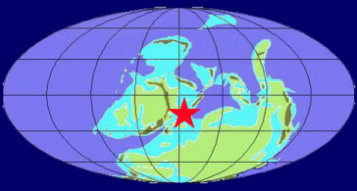Locality: Rhine Valley, Rhenish Massif, Western Germany
Stratigraphy: No formal status, Pragian (~Siegenian) to mid-lower Emsian;
pyritized zone restricted to Bundenbach
Age: Lower Devonian ca 392 - 388 Mya

Image of the Hunsrück locality, Western Germany
The fine-grained slate of the Hunsrück of the Rhine Valley in Western Germany provided roofing material for centuries, but the site (especially the Bundenbach area) is better known to paleontology as one of the most important Konservat-Lagerstätten (fossil deposits of exceptional preservation) in Europe, exhibiting preservation of soft tissues in pyrite. In the Hunsrück are some of the very few specimens of trilobites showing antennae and limbs, as well as internal organs, visible in x-ray images. The fossil groups best represented in the Hunsrück Slate include trilobites, echinoderms, and vertebrates. Ferdinand Roemer (1862) published the first paper on the Hunsrück fossils, and key workers that followed (e.g., Opitz, Richter, Lehmann, and Stürmer) advanced knowledge of the fossils at the site, as well as the nature of marine ecosystems during the Devonian.






